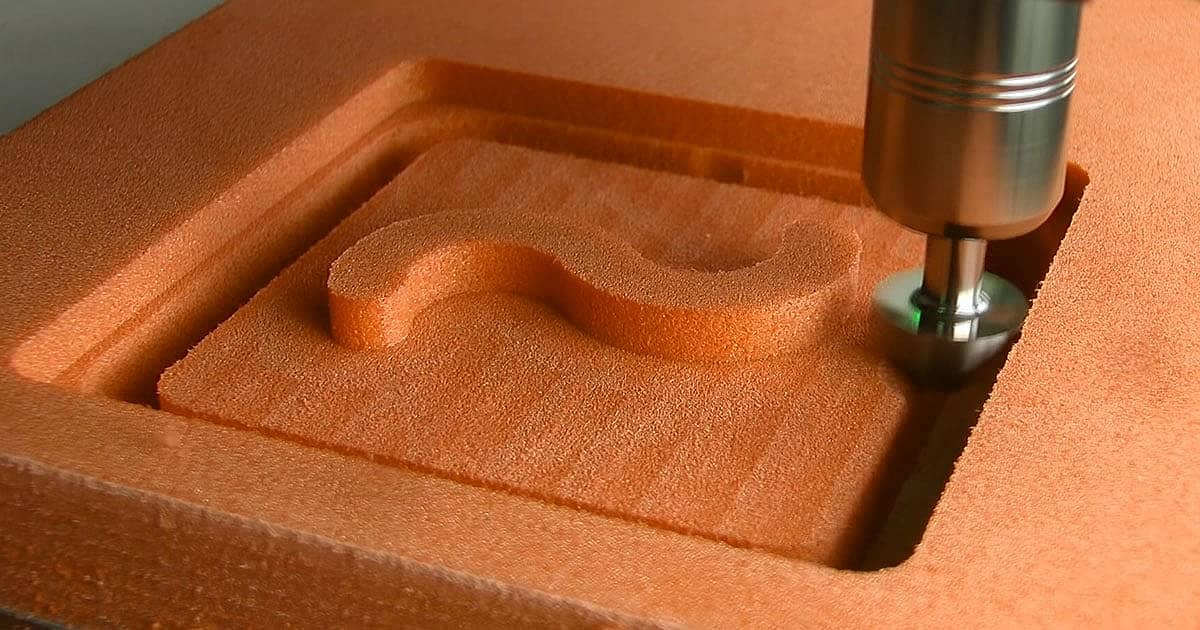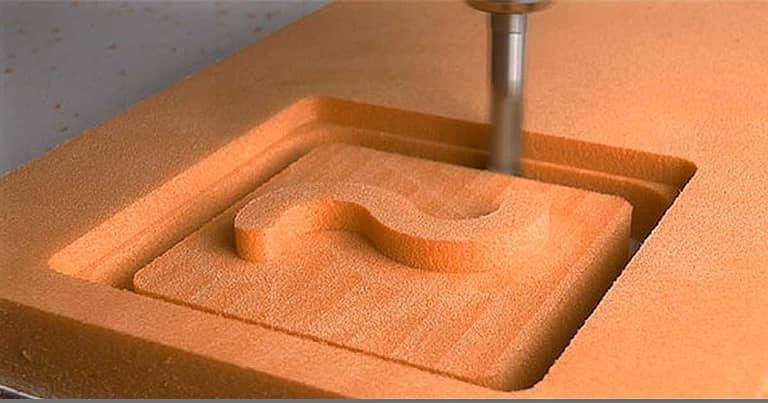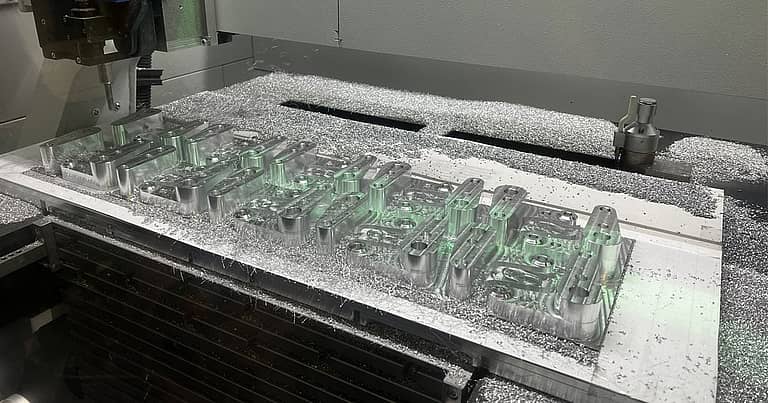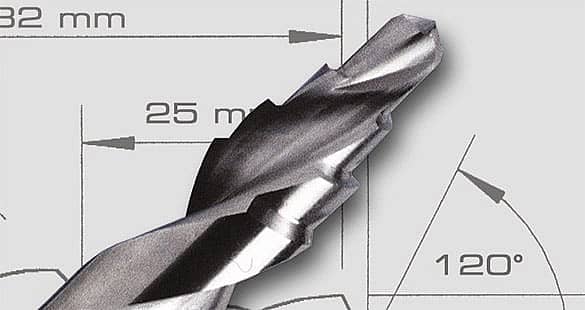
What is Conventional Milling?
Manual milling machines and older CNC designs are prone to backlash, so a machining strategy was needed to counteract it. That’s how conventional milling became a well-known, traditional method because it reduces machine backlash.
What’s backlash? It’s the gap between a machine’s mechanical parts, like a ball screw and nut. That allows for free movement and can cause lost motion. Backlash impacts the machine’s positioning accuracy and the responsiveness and accuracy of the mechanism.
Conventional milling, also known as “up milling”, has the tool cutting upward, starting from the bottom of your material. The direction of your tool flutes goes against the rotation of your spindle (for a gantry-style CNC machine). There is reduced backlash with conventional milling because the rotation of your tool and spindle doesn’t pull the table.
Our application engineer team used conventional milling and climb milling with DATRON’s foam end mills to create tool kits for our service technicians.
What are the Benefits of Conventional Milling?
Benefits of Up Milling
- Reduces backlash
- Less tool deflection
- Starts cut with small chip width
- Good strategy for milling hard materials, making thin features, and micromachining
It offers significant benefits when milling tough materials such as cast iron or hot rolled steel. Material like hot rolled steel has a hard layer on the outer surface, and conventional milling starts the cut under the material. Up milling also starts with a smaller cut, and the chip thickness increases with the cut. When machining with this method, the tool can handle the hard material better and it’s less likely to deflect.
Depending on the tool deflection you have to deal with, conventional milling can sometimes offer a better finish pass. It really depends on the material and part. This is because of the direction of reactive forces which is parallel to the tool path in up milling. When the material is thin or weak, any deflection that occurs during up milling will be along the tool path vs. into the workpiece. Micromachining or milling thin walls are good examples of when to use this method.
Another instance of when to use conventional milling is for a finish pass with foam. Instead of tearing the material when you cut down with a climb milling strategy, you’re pushing the material into itself with up milling. To get even smoother cuts and edges with your foam parts, our customers use DATRON’s foam cutters.
Grimsmo Knives used DATRON’s foam end mill (product #00680530) and conventional milling to perfect their foam packaging process.
There are some drawbacks to this milling method. Since your tool is cutting from the bottom up, the chips are being deposited in front. This means you end up recutting chips. That decreases your surface finish and increases your tool wear. Also, the chip gets heavier as the tool cuts up and that creates upward force that can stress your workholding.
So, when do you use conventional milling or another strategy? Ultimately, it depends on what you’re making and your machine’s capabilities. Our DATRON application engineer team can advise you on which strategy makes sense for the material, operations, and your DATRON machine. For more general machining tips, check out our blog articles.







